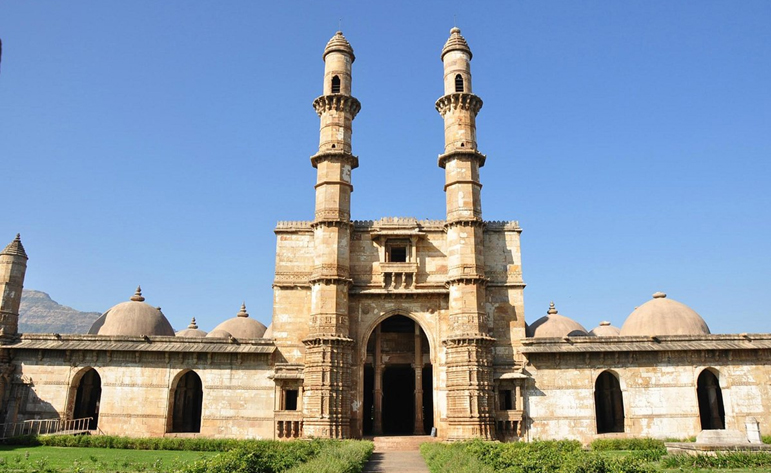
Champaner - Unesco World Heritage Site

Explore Champaner ... Discover History
Champaner was an out-of-the-way pilgrimage site for hundreds of years. It became the capital of Gujarat, and was then abandoned to be overtaken by the jungle. The city rose and fell almost as fast as the modern stock market, but left behind far more aesthetic remains.
The city is remarkably well-preserved, with Hindu and Jain temples which are a thousand years old, mosques from the time of the Gujarat Sultanate, and the whole workings of a well-planned capital city still in evidence, from granaries and fortifications to stepwells and cemeteries. At Champaner you can walk the ancient streets just as its inhabitants did five centuries ago. Champaner became a UNESCO World Heritage Site in 2004.
Large reservoirs to store monsoon rains for the rest of the year were built using earthen beams to contain the natural flow of streams coming downhill. The series of created lakes empty into each other as they successively overflow, eventually ending in the largest lake, the Vada Talav, on the plain below the city.
This marvel lost in time certainly makes for an intriguing and charming visit. Explore Champaner, discover history.
Paragarh Hill...height of bliss!
At the summit of Pavagadh Hill, 800m above sea level, is the temple of Mother Kali, which is the oldest in the area, dating from the 10th–11th centuries. Hindu pilgrims were coming to visit this temple from long before the development of Champaner as a major city, and they continued for hundreds of years after its decline, right up to the present day.
To reach the temple at the summit is about a 5 km walk along a jungle footpath to the top of the hill; otherwise, there is a cable car which will haul you to the summit from about the midway point, which is the last place accessible by road.
The temple has large fortifications and an open chowk in front, with two altars for sacrifices, and an array of lights for special occasions. The idol of Kalika Mata in the inner sanctum is only the head, the mukhwato, painted in red. Also present are full idols of Mahakali and the yantras of Bahuchara. The temple is open from very early to quite late, to accommodate pilgrims arriving at all hours. The Machi Haveli is a rest house available for pilgrims.
